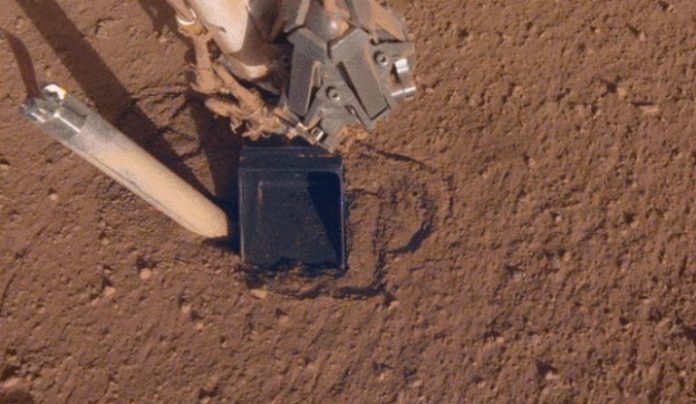InSight’s HP 3 rig keeps its balance and doesn’t fall – a team of engineers came to this conclusion after analyzing images of the involved operation process, which provided the drill with the necessary friction about the ground. Experts will now work on a plan for further action, the result of which should be the resumption of drilling, according to the mission’s tweet.
Encouraging news: after my latest small arm moves, the mole looks to still be stable in the ground. Now I can move my arm again to get some more detailed images of the situation. #SaveTheMole #Teamwork pic.twitter.com/qnA22oLVEa
— NASA InSight (@NASAInSight) October 31, 2019
HP 3 (The Heat Flow and Physical Properties Package) is one of the main scientific tools of the InSight automated station, which is engaged in the study of the internal structure of Mars. It was expected that with the help of a 40-centimetre drill, the station would break a five-meter well in the ground, into which a cable with sensors gathering information about the thermal conductivity of various soil layers of the Red Planet would be lowered. But in early March, HP 3 suspended drilling operations.
Later it turned out that the drill has little grip on the surrounding soil, due to which the recoil during impacts is not balanced and it does not move deeper, while the walls of the borehole are greatly expanded. Engineers first tried using a small bucket mounted on the end of a 2.4-meter IDA robotic arm (Instrument Deployment Arm) to tamp the soil near the edge of the well, but this did not bring tangible benefits. After that, it was decided to gently press the drill itself to provide it with the necessary ground grip for the job. This plan worked and the drill gradually dug 4-5 centimetres into the soil in a few work sessions.
On October 26, 2019, during operation, the drill suddenly half jumped out of the ground. It is assumed that this is due to the mechanical properties of the soil in the well, which could have crumbled there during previous drilling attempts. The other day, engineers gave the command to the station to carefully lift the bucket and shoot this process, because it was necessary to understand if the drill itself would fall. The images sent to Earth showed that the shock probe maintains balance and does not need support. Now the specialists will move the robotic arm away and begin to examine the well. In the future, the mission team will again try to fix the position of the drill with a bucket, and then try to continue drilling.
